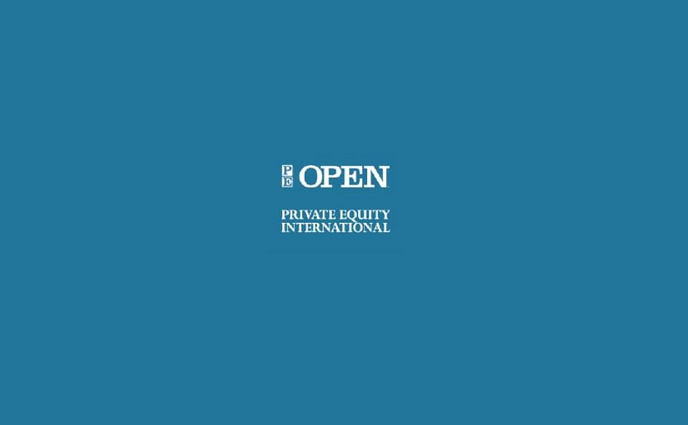Designing and developing effective boards to drive value creation in PE investments

Value creation has become one of the overarching topics in the world of private equity. But once you have achieved this, how do you measure the impact? – Guest contribution by Dr Sabine Dembkowski, published by “The Operating Partners Forum”.
Value creation has become one of the overarching topics in the world of private equity. Since leverage effects and multiple expansion is no longer enough to make a successful investment, the industry has started to institutionalize value creation through e.g. operating partners, industrial partners, serial CEOs and/or chairmen complemented by consultants with the aim to create a repeatable value creation model. But once you have achieved this, how do you measure the impact? Since private equity appeared in the 1980’s, IRR was ‘the’ KPI. However, IRR does not (properly) consider the general development of the markets,interest rate movements, leverage, sector choice, acquisitions etc. More than logically IRR will be more and more replaced by ‘Alpha’. Alpha enables a more neutral performance measurement of investments or funds vs. generally accepted performance indicators like the MSCI Global[1]
What will be next?
Funds will start to breakdown alpha into its components. They will break it into the growth resp. gross profit improvement, cost reductions, cash improvements, value created through acquisitions and divestments or even into individual initiatives. This will help investors to better analyse to what extend value has been extracted from a portfolio company and where there are further opportunities. By this they will also be able to better convince their LP’s of their capabilities. Let’s now have a closer look where and how the value is physically created. A main pillar of the PE operating model and a key belief of Private equity investors is that they have put the right management team in place. However, statistics show a different picture.
Over the lifespan of an investment over 50% of the CEO’s and an even higher number of the other board members are exchanged[2] compared to a 15% rate in the world’s 2,500 largest public companies[3]. In around 50% of the cases the change of the CEO was not planned and is due to underperformance of the individuals. This ‘underperformance’ is in many cases just caused by a mismatch of the skill set with the requirements after e.g. a change in strategy, ‘human incompatibility’ with other board members, the incapability to gain the trust of the shareholder, missing empathy to convince within the organization and not acting as a role model for the employees –-‐ to name a few.
Given that management is the key enabler and driver of value creation[4] there is obviously a need to do it better –and –as early as possible in the value creation process. After extensive research over the last almost ten years we have identified seven key principles that may be applied to avoid or at least minimize this potential downfall. There is hands–-‐on advice given for investment professionals by lever what they need to consider in the selection process of a board (member) or when analysing an existing team. The below checkmarks are a starting point that usually would be followed by a professional board assessment providing deeper insight into the status and the development need of the board members and particularly how the board as a team can improve.
- The composition of the board
- The ability of the board to use the strength of its members
- Clarity about roles and responsibilities
- Joint vision
- The ability to resolve conflicts between the board and management
- The structure and organization of the board’s work
- Regular reviews and reflection about the board’s work.
PE firms can use these variables to strengthen their own position with the board and increase the reach and impact of their work and value creation process. We will expand on each of these and suggest ways in which PE professionals can make use of these insights to extend their reach and level of influence and have a positive impact on the value creation process of an organisation.
1 Composition of the board
This is probably the area that has received most attention to date, especially with discussions in the media about diversity and quotas for women on boards. But diversity is just a small part of the puzzle. Let ́s look at what happens in practice. Organisations that have the funds tend to hire well–-‐ known headhunting firms that are briefed to find executives with a distinguished background, expertise and track record of achievements. More often than not the exercise produces a board full of “achievers” and “alpha animals”. This type of selection provides security and the feeling among all involved that they have done a really good job. This is a well–-‐intentioned (but rather expensive) way to form a board and by no means guarantees superior returns. On the contrary –the chances that such groups really work well together are rather slim. This is not a question of education, experience or past achievements; it is a question of complementary personalities, behaviours and fit. Very few recruiters and PE firms look at this stage systematically for these criteria. Action Point for PE professionals: Ask your headhunter to design an interview and selection process that specifically tests and identifies these criteria. This can be done through the combination of tried and tested interview techniques and validated psychometric tests.
2 The ability of the board to leverage the strengths of its members
The awareness of board members of their own strengths and how they can use them best varies enormously. Some are highly aware but others are far less so. In our own practise we experienced that they use their strength more by accident than by conscious decision. This lack of understanding becomes even more acute when they are questioned about the strengths of other board members. They are seldom able to describe them in more than general terms. Sadly, this means that one of the most powerful ways to increase the effectiveness of boards remains underused. Seasoned board members are often unwilling to learn but we have found that the new generation of directors has a different attitude. Encouragingly, they are highly interested in learning about themselves and how they can become more effective –provided that narcissism is not a too pronounced on an individual or collective level. Action point for PE professionals: Encourage the identification of personal strengths. Here they can for example point to validated instruments and tests for example, the VIA Signature strengths test or the Gallup strength finder.
3 Clarity about roles and responsibilities
Roles and responsibilities are not as clearly defined as one may wish. Some “grow” over time or are the result of a specific initiative of an individual board member and tailored around his agenda, skills and needs. We have seen substantial “grey areas” of responsibility on many boards. The existence of these areas leads to situations where unpleasant or uncomfortable tasks and decisions remain unaddressed or delayed. This can cause conflict on a daily basis and waste or even destroy resources that could be used to create value for the organisation and its stakeholders. Action Point for PE professionals: Capture the roles, responsibilities and tasks of individual board members and create a map of roles and responsibilities that need to be in place in order to develop and implement the strategy. This exercise will highlight roles and responsibilities that are not clearly assigned. Both detection and discussion depend on a basis of trust existing within the organisation, and will require tact and a high level of diplomacy.
4 Development of a common vision
This sounds so simple and obvious –but in practice it proves to be a real and at times insurmountable challenge. Developing a shared vision and gaining the approval and commitment of all stakeholders is a process. The communication of a shared vision is essential:nothing is more damaging to a company than the revelation that there are disagreements on the board about vision, strategy and subsequent action to be taken. Action Point for PE professionals: Encourage and design a process for establishing a common vision. We have observed that the most successful companies design a development process for defining and communicating the vision throughout the whole organisation –but it starts at the board.
5 The ability to resolve conflicts between the board and management
Now more than ever it is the challenge of a board to lead “highly educated people with great potential” who are sensitive, observant and understand what the board is saying or not saying, doing or not doing. Executives at one or two levels below the board have mostly been to first–-‐ class universities or business schools and have their own ideas about the company and its direction. This can lead to covert or even open conflict. Board members are more than ever challenged to convince these executives with the quality of their argument and personality, to analyse conflicts and solve them. This size of this challenge should not be underestimated. A coalition or alliance between the board and management will be crucial for success. The board can serve as a role model for the development of a culture where conflicts are resolved constructively. The solid behaviour of board members in a conflict will be decisive for the culture of the organisation. Harmony is rare when an organisation wants to leverage and realise its full potential. Action Point for PE professionals: Encourage the investment into personal development and conflict–-‐resolution skills.
6 The structure and organization of the board’s work
Many board members have told us in on–-‐boarding coaching programmes that theywere “completely lost” on joining the board and had to learn how to operate at that level the hard way, over time. The work of many governing boards is poorly structured and new members have to “settle” into a system that works for those in the know but is not necessarily well–-‐ structured or logical to those observing or joining it. This is a factor that deserves more attention; much can be done to improve the organisation of the board’s work, often at little cost but with a highly positive effect on the organisation. Again, what happens at board level will be mirrored at lower organisational levels. Action Point for PE professionals: Encourage the design of special on–-‐boarding programmes for new board members and start to collect information and documentation about what has worked well in the past or what works well in other portfolio organisations.
7 Regular reviews and reflection about the board’s work
Regular shared time out, where people have the opportunity to connect with each other and reflect ontheir work, is appreciated by many practitioners and highlighted by writers around the world as a crucial component of any best practice process. In fact, in the literature on the work of boards, it is the one point on which there is overwhelming consensus. With this level of agreement, why do so few boards plan time–-‐out on a regular basis? Action Point for PE professionals: Encourage the time out of the board. In fact sponsor guided reflections about the boards work. Considering the above will help investment professionals to judge on their board’s performance and to take first steps for improvement. Dr Sabine Dembkowski and Dr Stefan Wegener are managing partners and founders of Better Boards
[1]Private equity Study: Finding Alpha 2.0, Prof. Oliver Gottschalg / Golding Capital Partners, Nov 2011 [2] The Boston Consulting Group, Private equity and the CEO, Antoon Schneider and Nathan Lang, Nov. 2013 [3] Time for new CEOs: The 2012 chief executive study, Ken Favaro, Per–-‐Ola Karlsson, and Gary L. Neilson, Booz & Company, April 2013 [4] Survey of 330 European investors, SJ Berwin, 2004; 69% of failed investments are attributed to management


